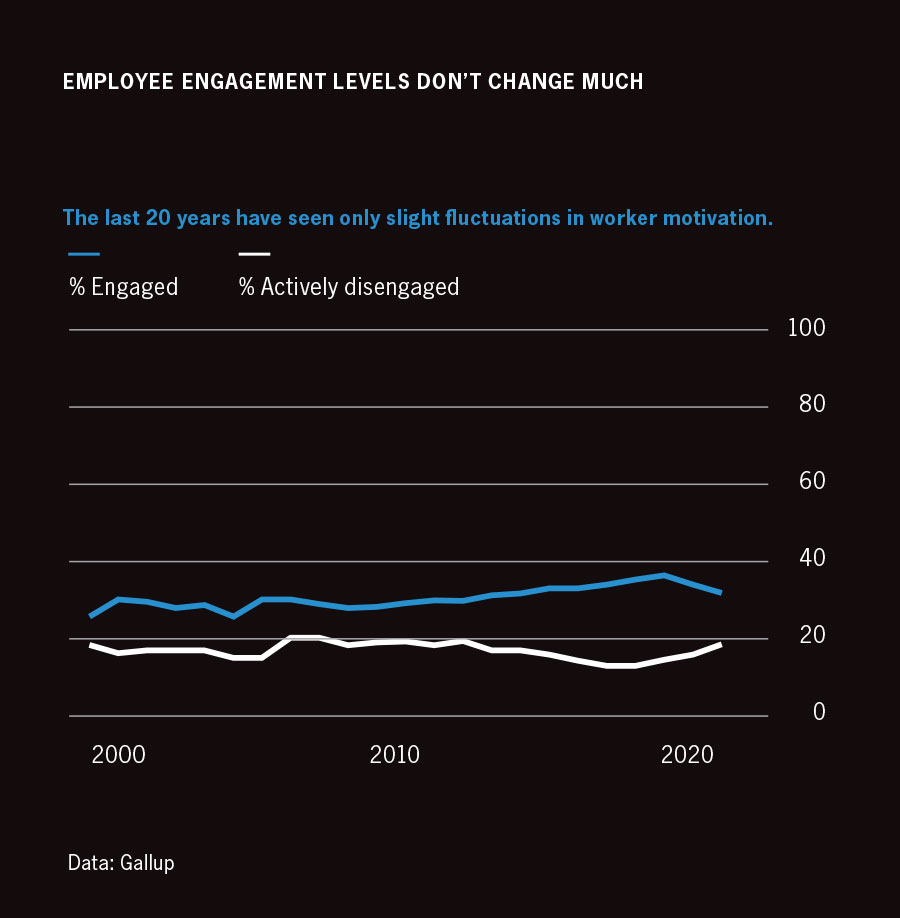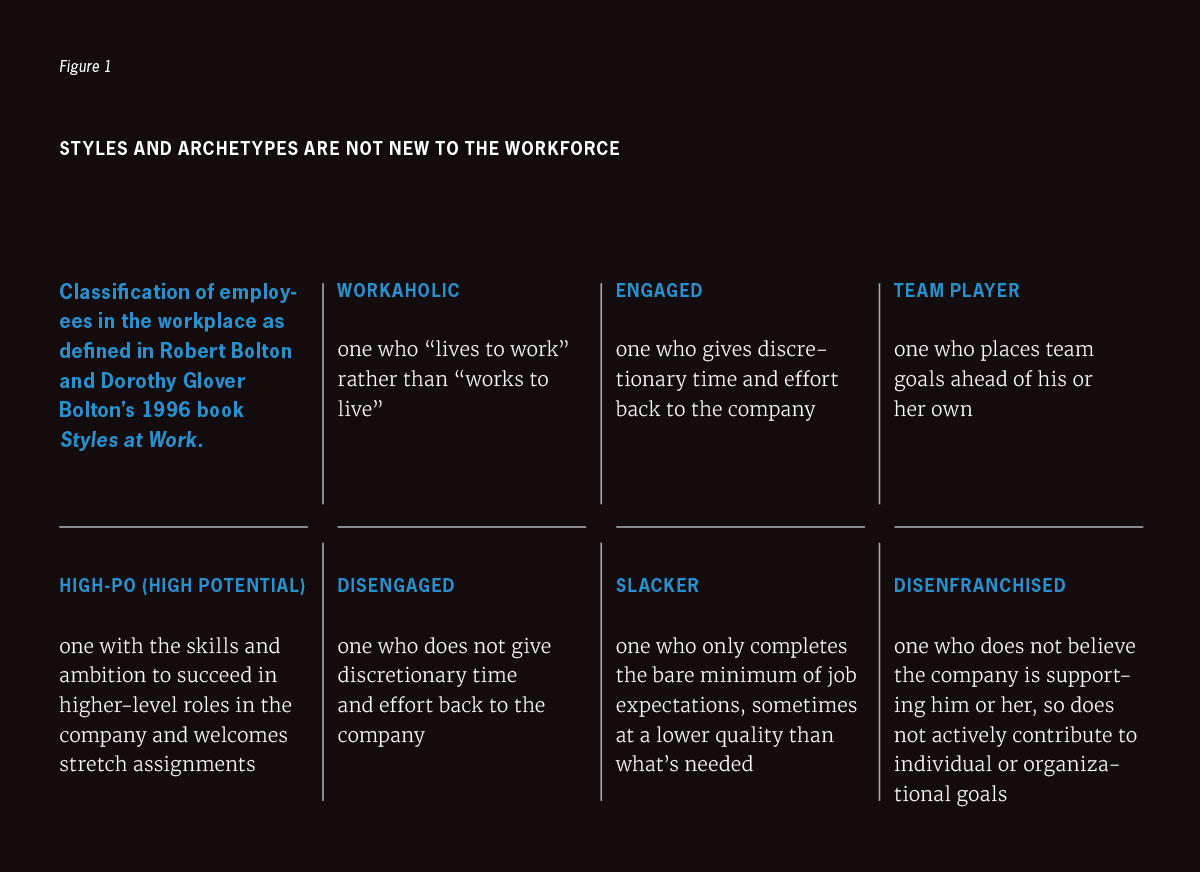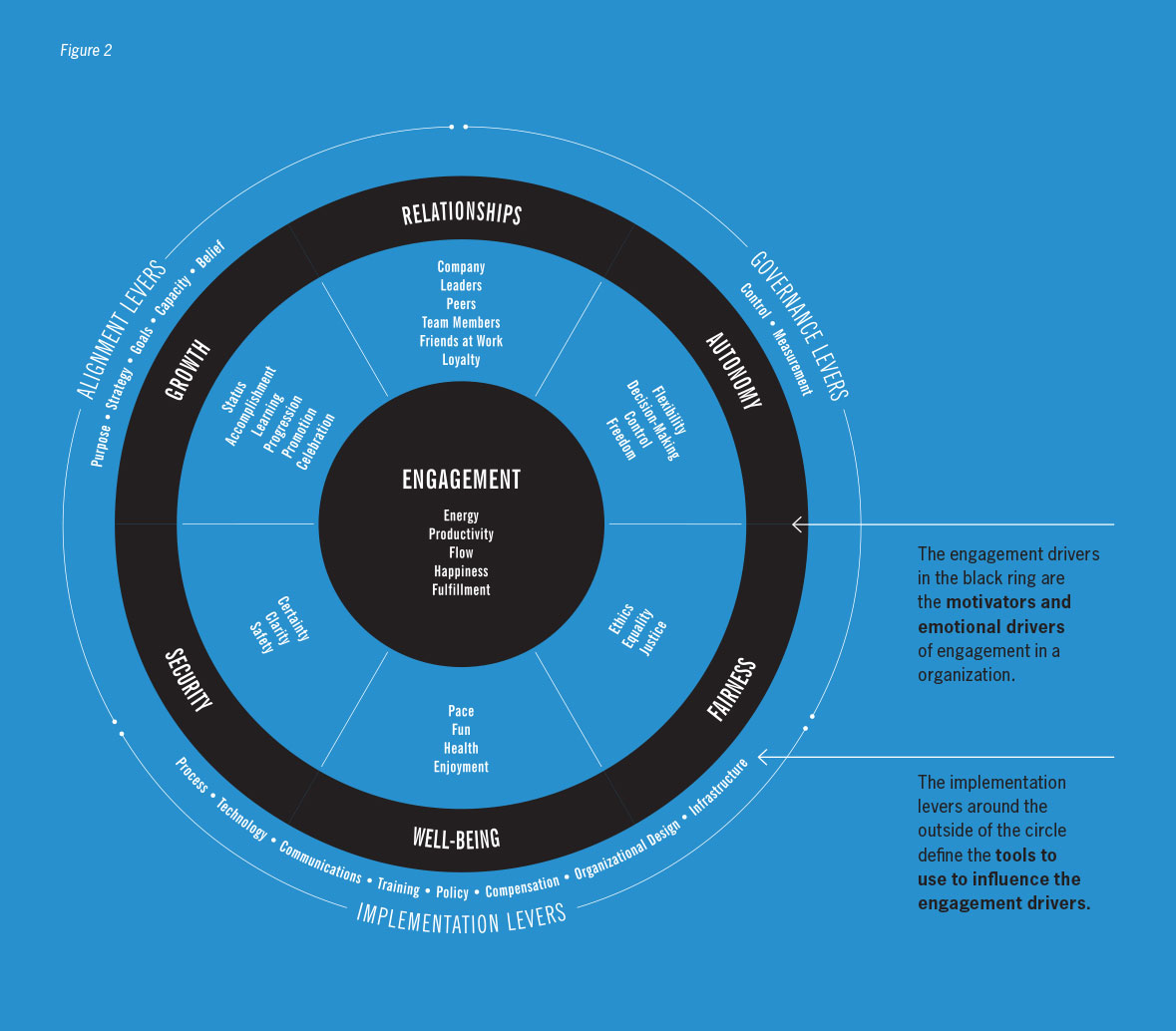Social media is erroneously amplifying the critical challenges facing employers in the realm of hiring, retention, and talent development. As a result, it is leading employers to adopt ill-suited policies to address employee engagement and worker productivity. This article illustrates how the Jabian Engagement Framework can help employers cut through the social media noise to ensure they’re not reacting to soundbites but providing a real value proposition for current and future employees.
Over the past few years, those of us working in corporate America have been alerted to the critical employee-related challenges facing employers. These alerts, however, are not coming from traditional sources such as employee engagement surveys, exit interviews, onboarding information, and talent acquisition. They are coming from social media. Thanks to social media, phrases like “The Great Resignation,” “Hybrid Working,” and “Quiet Quitting” have all entered the business lexicon and are purported to represent, or at least influence, employee engagement, and worker productivity. But do these new concepts make a real impact, or are they simply a way to generate “likes” and “shares”?
Yes, thank goodness (#sarcasm) we have social media and the subsequent echo chambers that are our newsfeeds and inboxes to help keep us on top of what we should suddenly be worried about. Social media provides a tremendous amplifier — but with no filter. With the speed of communications, we no longer must wait for an annual survey to get a sense of what our competitors are doing before we carefully consider how our strategies should be adjusted.
All this noise, however, is creating a range of responses from corporate executives. We see organizational leaders and HR teams struggling with conflicting, and often emotion-based, calls for urgent ways to optimize work efforts and win the war for talent. Headlines like “Majority of employees say they will quit if they are called back to the office” are found in the same publication with headlines like, “Hybrid work is over as companies reinvent their office space to bring employees back.”
Statistics can be found to support whatever side you are on, and they are driving the creation of policies based on stories and trends rather than hard data. We also see employees grappling with trust issues as they read headlines like “This will be a record year for employee compensation increases” alongside “Employers stop recruiting and contemplate layoffs as fears of impending recession grow.” These types of news stories are pitting employers and employees against one another.
But let’s hit pause for a moment and ask an important question: Are we allowing our office policies to be influenced by our social media feeds? Are new themes coming to light online that should be addressed, or are we allowing the oversimplification of challenges associated with “people” strategies to create unnecessary angst and divert our attention from the real issues? Organizations that have the capability to filter out the noise while elevating the employee experience will be best positioned to attract and retain a talented workforce.
WHY ‘QUIET QUITTING’ IS NOTHING NEW
To understand exactly how far social media has driven the train off the rails, you need to look no further than the phrase “Quiet Quitting.” The term, which was coined on TikTok in early 2022, defined a new and dangerous behavior in the post-COVID-19 workplace. What started as a few anecdotes on social media from frustrated employees quickly snowballed and went viral, garnering enough attention that Forbes alone has published over 130 articles on it. Clearly, a spark on social media can ignite ideas that inspire hundreds of pieces in well-respected media outlets that are viewed by key decision-makers every day, all without a consensus being formed on what the term even truly means. But no matter what one might believe about “quiet quitting,” the reality is that employee engagement levels haven’t changed in 20 years. According to Gallup’s long-running 12-question engagement survey, actively disengaged employees have largely held steady at between 13 percent and 20 percent for decades, while engaged employees have also been stable at around 30 percent.
Aside from the fact that the term “quiet quitter” doesn’t address the nuance between employees putting healthy boundaries in place and those doing the bare minimum to avoid getting fired, it also doesn’t account for the fact that there have always been various work styles in the corporate office. In fact, Robert Bolton and Dorothy Glover Bolton wrote a book in 1996, Styles at Work, which centered on understanding “people styles” and making small adjustments when interacting with different styles in order to get more done.
Since that time, many authors and leaders have reached a common conclusion that different “archetypes” of employees do exist, that organizations need them, and that we cannot, and should not, address them all the same (see Figure 1). Nuanced explanations, however, do not generally drive click-through traffic as effectively as an emotionally charged social media post. And it is important to remember this idea of employee archetypes when confronting a new trend in workplace behavior. Is it actually a new behavior or simply an employee matched to a role that does not fit?

ACTIVELY DISENGAGED EMPLOYEES HAVE LARGELY HELD STEADY AT BETWEEN 13 PERCENT AND 20 PERCENT FOR DECADES.
Source: Economic Times: Quiet quitting, lying flat & the Great Resignation. October 14, 2022

STYLES AND ARCHETYPES ARE NOT NEW TO THE WORKFORCE
Classification of employees in the workplace as defined in Robert Bolton and Dorothy Glover Bolton’s 1996 book Styles at Work.
WORKAHOLIC
one who “lives to work” rather than “works to live”
DISENGAGED
one who does not give discretionary time and effort back to the company
ENGAGED
one who gives discretionary time and effort back to the company
SLACKER
one who only completes the bare minimum of job expectations, sometimes at a lower quality than what’s needed
TEAM PLAYER
one who places team goals ahead of his or her own
HIGH-PO (HIGH POTENTIAL)
one with the skills and ambition to succeed in higher-level roles in the company and welcomes stretch assignments
DISENFRANCHISED
one who does not believe the company is supporting him or her, so does not actively contribute to individual or organizational goals
PURPOSE-DRIVEN ENGAGEMENT
With all the social media chatter clogging our communication channels, how are employers supposed to wade through the noise and stay focused and purpose-driven, rather than react to the noise? We believe that it begins with understanding, and keeping a pulse on, the engagement of their people. At Jabian, we’ve developed the Engagement Framework (see Figure 2), introduced in The Jabian Journal in 2016, to diagnose problems and design solutions that involve people. It starts with asking questions.
- Is this trend something we need to chase or prepare for? How do we know that? By getting to know our employees.
- What does Great Work mean? Recognize that we get hung up on style as a performance indicator when we really need to measure great work. Take the focus off the media’s portrayal of styles.
- Where is the friction? Friction comes when the policies are arbitrary and in conflict with business objectives, or where consumer and producer preferences are at odds.
- Do we have a clear alignment of vision, mission, and policies? If these are aligned, then you will be able to quickly filter out the noise.
- How well do we listen to our employees and understand their preferences? How do we decide which preferences to place the most weight on?
- Are our policies based on reason and business sense, or have we allowed the arbitrary “this is how it has always been done” to overtake innovation?
- Are your policies driving the behavior you intend? A policy can influence behavior. It’s a lever that can be used to identify out-of-bounds actions or performance.
- Are our policies flexible? Do they resonate with multiple work styles and employee segments? Managers, as well as employee peer groups, must know how to recognize, communicate, manage, lead, and influence different styles.
- Do we have the right styles in the right roles? Recognize that some working styles are better suited to specific roles and responsibilities.
- Have you identified the boundaries of your policies, or have you taken flexibility too far? Policies that are too flexible or too rigid in the wrong situations may hurt employees.
The answers to the above questions allow us to gauge which segment of the engagement framework should be focused on first. We identify which segments (the “levers”) of an organization are out of alignment with the key “drivers” of their culture. Once the misalignment is identified, assuming leadership is happy with their culture, we can determine the why and how of adjusting the levers to bring the organization into alignment. Conversely, if leadership wants to change the culture, we can adjust the levers to align with the desired culture and drive new behaviors.
It is important to note that the Engagement Framework can be applied at the individual, team, or organizational level. Often it is helpful to group your organization into archetypes or work styles so policies and communications can be tailored accordingly. Additionally, the Engagement Framework is a tool meant to be used on an ongoing basis. What drives engagement at any level of an organization changes over time, so keeping your pulse on those drivers is important. Tracking them can be built into your annual satisfaction surveys and performance reviews. Our ultimate goal is to help you keep everything in perspective and fix your eye on the prize of alignment and proactive leadership.

UNDERSTANDING THE ENGAGEMENT FRAMEWORK
At the center of the model is Engagement. Engagement applies to individuals, teams, and organizations. Engaged people and engaged organizations are happier and more productive. Companies with engaged employees are more profitable. The wedges around the center of our model are the six categories of engagement drivers. Each of these drivers can be positive or negative for people at any time. Three categories of levers appear in the outside ring of the Engagement Framework and can be used to influence the six engagement drivers. Alignment of purpose, goals, strategy, capacity, and belief is the first key to maximizing engagement. The key to maximizing engagement is to align each of these at the individual, team, and organizational levels. The goal is to eliminate any dissonance between what matters most to the individuals working in an organization and the organization itself. Aligning these elements maximizes intrinsic motivation and creates coherence across the organization.
FILTER OUT THE NOISE BY BEING PROACTIVE
There’s probably nothing new about many of the buzzwords flying into your social media feeds. Yet with so many voices being amplified over media, it is tempting to listen to, and try to capitalize on, the newest trends. The risk of an organization responding in reactive mode, however, is that it can lead to the creation of shallow policies and communications that are not reflected elsewhere in the culture.
What is important to remember is that the best sources of your employees’ desires are your employees themselves. Taking the time to understand their drivers and motivations (engagement!) and ensuring that your culture is aligned with those drivers — and is aligned with the company vision — is key.
If internal policies and structures are centered around actively engaging each member of the firm, then it is less crucial to look outward for the next big change in employee preferences. Actively engaged team members, who understand how their tasks align with the business needs, will provide more direct input than any article written to explain a trend from social media. When the inevitable next headline proposing a shift in work styles is paraded out, it is important to step back and ask if this would impact an actively engaged employee. And it’s important to engage in conversations with employees about what that new term on social media means to them. Using the Jabian Engagement Framework, you can internally assess alignment on an ongoing basis and actively foster engagement with your employees. We would love to walk you through it.
